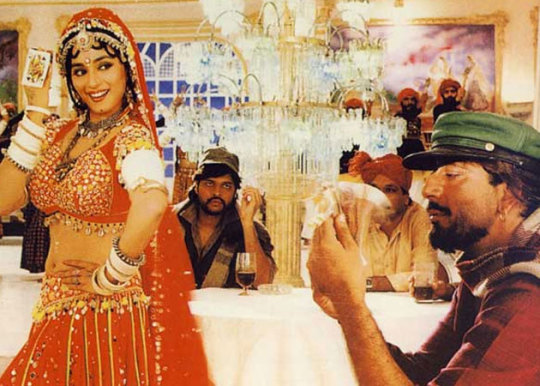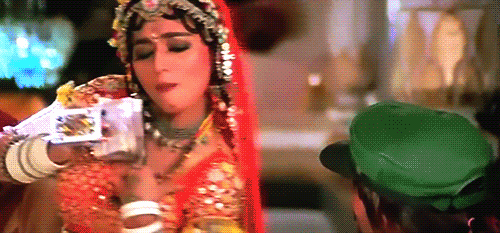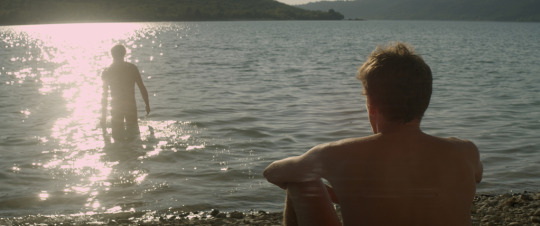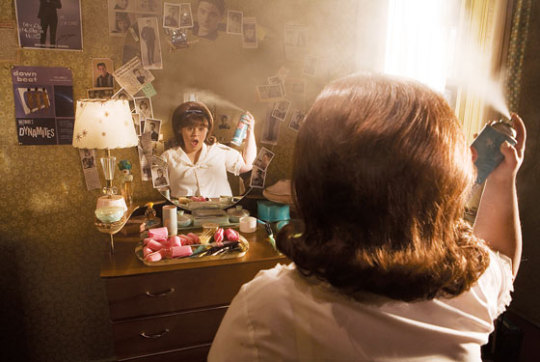Choli Ke Peeche Kya Hai?: Bollywood's Scandalous Question, and The Hardest-Working Scene in Movies by Genevieve Valentine
By Yasmina Tawil

In a nightclub with the mood lighting of a surgical theater, a village belle is crying out for a husband. Her friend Champa encourages and chastises her by turns; her male audience is invited to be the bells on her anklets. (She promises, with a flare of derision, that serving her will make him a king.) Her costume, the color of a three-alarm fire, sparkles as she holds center screen. The song and camerawork builds to a frenzy as if unable to contain her energy; the dance floors nearly chaos by the time she ducks outshe alone has been holding the last eight minutes together. And the hardened criminal in the audience follows, determined not to let her get away.
Subhash Ghais 1993 blockbuster Khalnayak is a masala film, mingling genre elements with Shakespearean glee and a healthy sense of the surreal. By turns its a crime story, a separated-in-youth drama, a Gothic romance with a troubled antihero, a family tragedy, a Western with a good sheriff fighting for the rule of law, and a melodrama in which every revelations accompanied by thunder and several close-ups in quick succession. (Theres also a bumbling police officer, in case you felt something was lacking.) It was a box-office smash. But the reason its a legend is Choli Ke Peeche Kya Hai?What’s Behind That Blouse? an iconic number thats one of the hardest-working scenes in cinema.
See, Ganga (Madhuri Dixit) isnt really a dancer for hire. Shes a cop gone undercover to snag criminal mastermind Ballu (Sanjay Dutt), whos recently escaped from prison and humiliated her boyfriend, policeman Ram (Jackie Shroff). Ballu, undercover to avoid detection, is trying to avoid trouble on the way to Singapore…but of course, everything changes after Ganga.
Though the scene shows its agethe self-conscious black-bar blocking, the less-than-precise background dancersits an impressive achievement. Firstly, its a starmaker: the screen presence of Madhuri Dixit seems hard to overstate. By 1993 she was already a marquee name, and she would dominate Bollywood box office for a decade after, both as a vivid actress and as a dancer whose quality of movement was without peer. But if youd never seen a frame of Bollywood youd still recognize her mountain-climb in this numberplaying the cop who disdains Ballu playing the dancer trying to court him, performing by turns for the room and to the camera, conveying flirty sexuality without tipping into self-parody, and all on the move for kinetic camera shots ten to fifteen seconds at a time. Dixits effortless magnetism holds it fast; the camera loves what it loves.
But this is more than just a career-making dance break; Choli Ke Peeche is the films cinematic and thematic centerpiece. Khalnayak is about performativeness. Ballu performs villainy (sometimes literally) in the hopes it will fulfill him; Ram vocally asserts the role of virtuous cop to define himself against those he prosecutes. As Ballu performs good deedssaving a village from thugs, ditching his bad-guy cape for sublimely 1993 blazershis conscience grows back by degrees. As Ganga performs a moral compass for Ballu, her heart begins to soften. And at intervals, crowds deliver praise or censure, reminding us that all the worlds a stage. (Its in the smallest details: While on the run, Ballus ready to kill a constable until it turns out hes an extra in the movie shooting down the street.)












